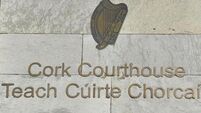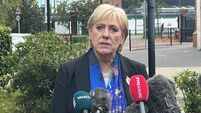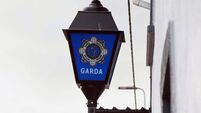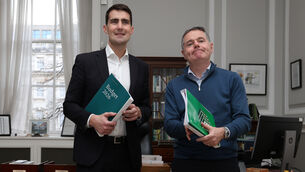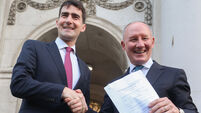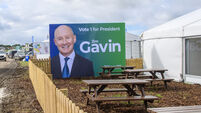Fota Wildlife Park director ready for the quiet life after 40 years at helm
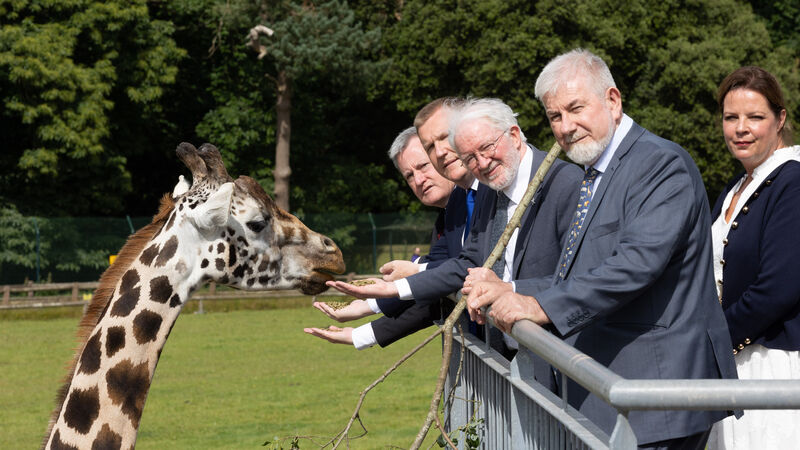
Minister of State for the Office of Public Work’s, Kieran O’Donnell, Michael McGrath, Minister of State for Nature Malcolm Noonan, Sean McKeown irector of Fota Wildlife Park and and Lynda McSweeney, head of education at Fota Wildlife Park at the official opening of Fota's Education, Conservation and Research Centre on Friday. Pictures: Darragh Kane
From wild life to a quiet life — after 40 years as director of Fota Wildlife Park in Cork, Sean McKeown retires on Monday, just days after delivering the largest single development in the park’s history.
It was more than fitting that the last official duty for the man who helped open the pioneering park in 1983, and who has overseen its development as both a major European centre for conservation of critically endangered species and a national visitor attraction, was to help formally open its new €5.5m Education, Conservation and Research Centre ECRC], that will train future generations of conservationists.
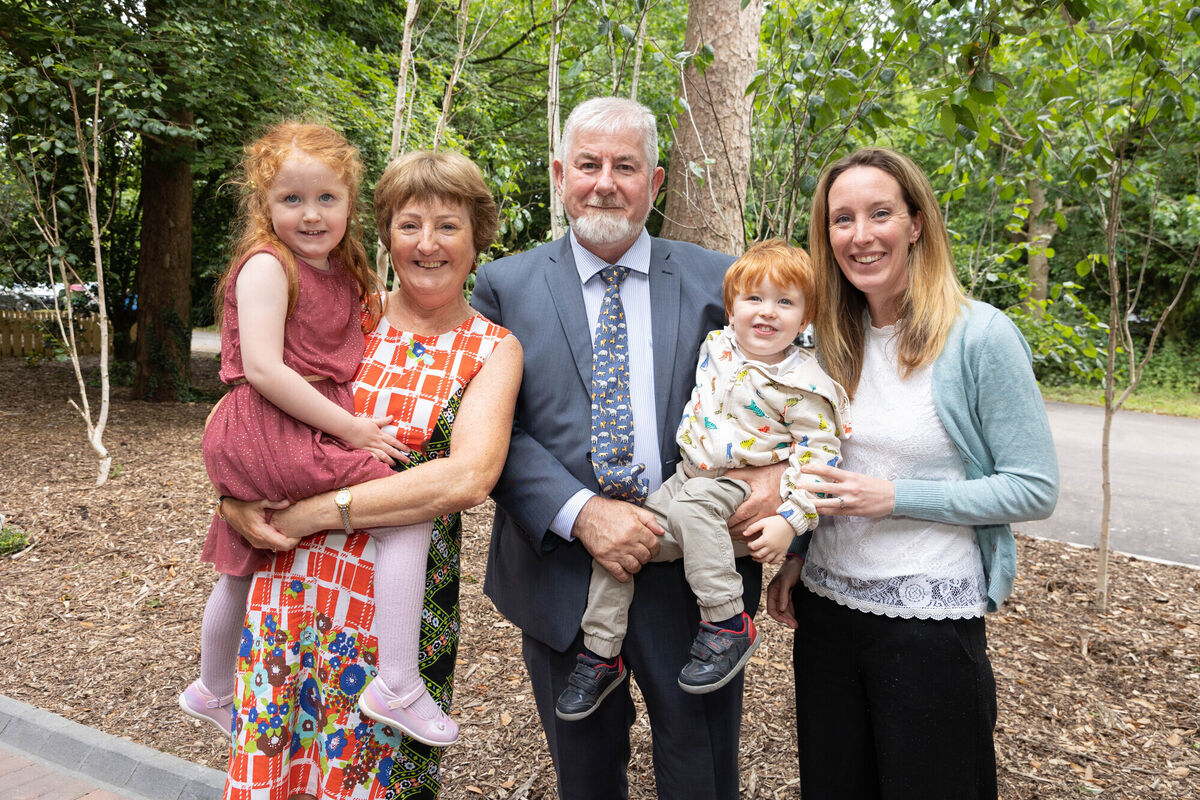
It is, after all, at the heart of all that Fota does. And it is needed today more than ever, Mr McKeown, 67, says.
We need to secure urgent behavioural change to protect the planet and all the species that live on it — including humans, he says.
“When we opened the gates here at Fota Wildlife Park, there were around 35,000 ring-tailed lemurs in the wild. Today, there are less than 3,000. About 95% of their natural environment in Madagascar has been lost,” he said.
“But this is not a problem confined to one country. This is a global problem. And we are not learning enough from it.
“Without a healthy natural environmental, climate change is going to effect us directly.
"It will affect species of animals, it will affect crops and food availability, it will impact on resources like water.
“It is already causing friction in parts of the world.
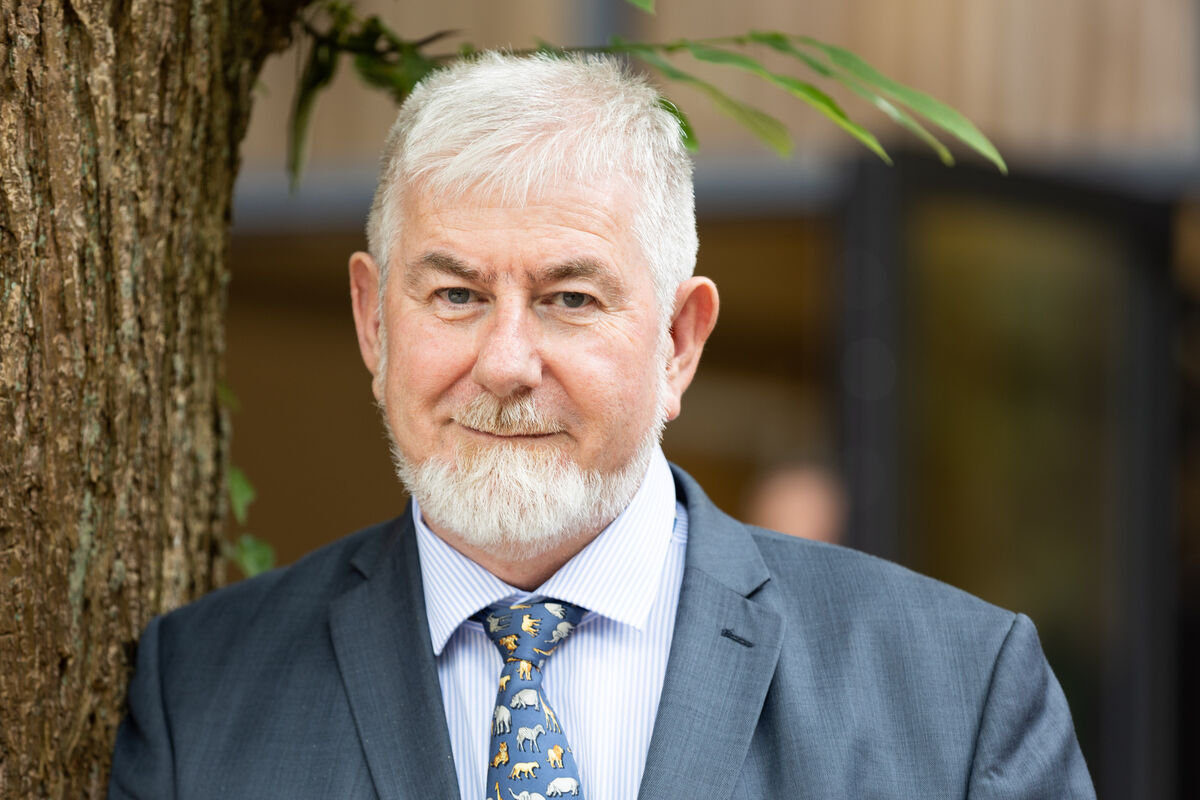
“It is going to be difficult to find a sustainable future without embracing change, but we have to. It’s as simple as that.”
Mr McKeown was singled out for praise at the official opening of the ECRC on Friday for his steadfast leadership in the development of the park and his commitment to conservation over the last four decades.
He said without the Government's financial support for the ECRC, the new complex would have remained a distant dream.
“Here, we place education, conservation, and research at the heart of our endeavours, weaving them into the very fabric of our mission, and solidifying their significance in our collective journey,” he said.
It’s been a remarkable journey for him, and the park, over the last four decades following the acquisition by UCC of the landmark Fota House and its adjoining estate in East Cork, which had been the home of the Smith Barry family for almost 800 years.
When the park opened in June 1983, it was one of the very first zoos in Europe to have species roaming free across vast natural parkland enclosures on a site two and a half times the size of Dublin Zoo.
Mr McKeown reckons they should have built it bigger at the time.
It opened with 33 species and 172 animals. Today it is home to over 135 species and over 1,000 animals.
From 101,00 visitors in its first year, almost 500,000 now visit annually, making it one of Ireland’s most visited tourist attractions, and worth an estimated €70m to the local economy.
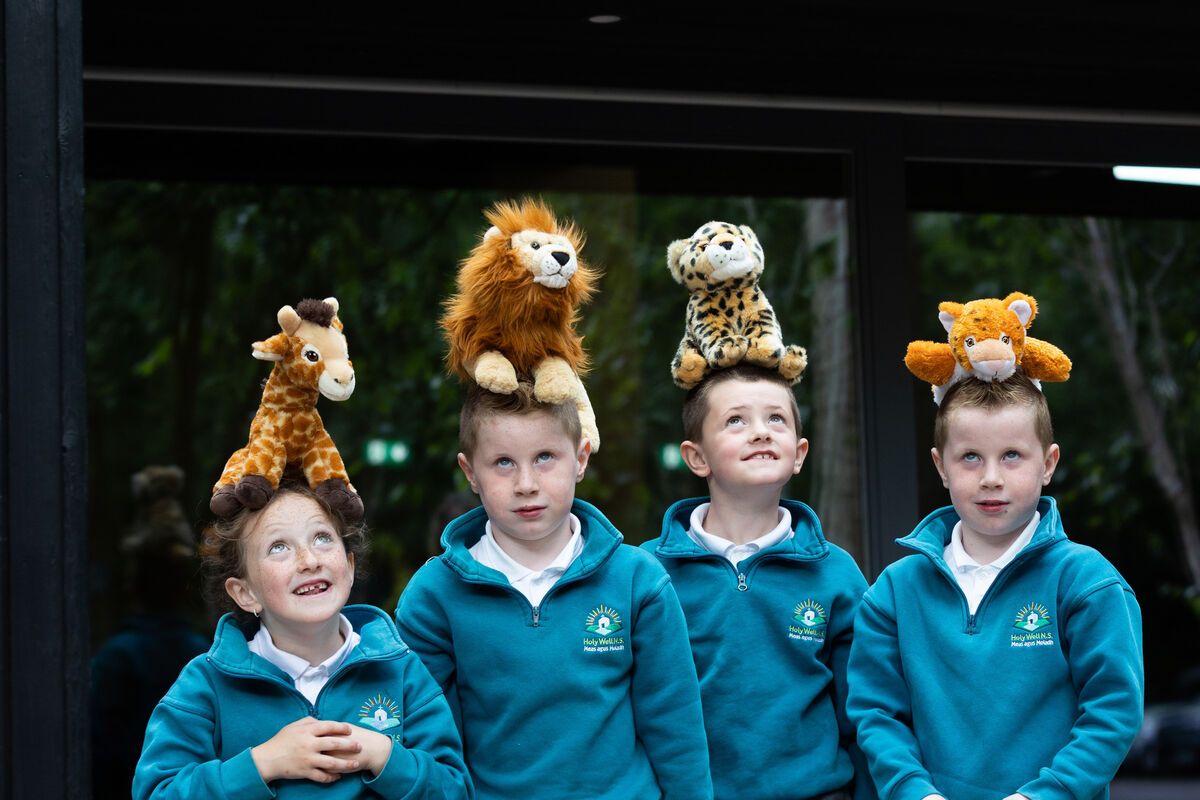
While it has become famous for its cheetah breeding programme, with over 240 cubs born at the park since the first cubs arrived in 1984, it is also renowned for breeding Rothschild’s giraffes and European bison.
It has had success with newer species too, such as the Sumatran tiger, the rarest subspecies in the world, and with Asian lions, and in September 2022, it celebrated the first birth in Ireland of an Indian rhino — one of only six Indian rhino births in any zoological institution in the world that year.
Last month, 12 Eurasian curlew chicks hatched at the park from 31 viable eggs collected from the wild across sites all over Ireland as part of national conservation project.
And more than 9,000 Natterjack toadlets have been reared at the park and released back into the wild in Kerry.
The park has expanded over the years to cover some 40 hectares, and has added new areas, including a giraffe viewing area, the cheetah run, the Asian sanctuary and the tropical house in recent years.
The new ECRC, which was opened by former finance minister Michael McGrath, OPW Minister Kieran O’Donnell, and the Minister of State for Nature, Malcolm Noonan, is one of the single largest projects ever undertaken at the park.
Developed at a cost of €5.5m, it was co-funded by the OPW and Fota Wildlife Park — €2m from the OPW and €3.5m from the park.
It has a 265-seater auditorium, three state-of-the-art classrooms, and a dedicated research centre which will welcome more than 20,000 students annually, making it Munster’s largest provider of outdoor education.
It will enable Fota to expand its formal and informal educational and research opportunities for students, providing significant opportunities to undergraduate and postgraduate students in third-level institutions, and also provide a large indoor space to host lectures, conferences, and corporate events.
Sustainability was a key feature in its design and operation, with solar panels and batteries producing its energy, rainwater harvesting providing 80% of its required water, and a heat recovery ventilation system and extensive insulation in the external walls significantly reducing its energy requirements.
Recycled and reusable products have been used throughout, including timber parquet flooring in the auditorium, which is made from recycled Midleton Distillery whiskey barrels.
The building is equipped with bat-friendly lighting, and the entrance walls are clad with Robinia timber, providing habitats for native birds and bats.
Its garden has also been landscaped with native plant species that are under threat of extinction in Ireland.
Mr McGrath congratulated Mr McKeown and the Fota board.
“Fota Wildlife Park is a much-loved institution in Cork, evoking happy memories for tens of thousands of people who have visited with family, friends and school groups over the years,” he said.
Jim Woulfe, chairman of Fota’s board, said the official opening of the ECRC was a “hugely significant” day for the park.
“We are especially grateful to the Government for their excellent support and significant contribution and we compliment the exceptional leadership of Sean McKeown, whose adept management ensured the project was completed on time and within budget,” he said.
Aileen Tennant, a Carlow native and DCU science education graduate, who ran the Discovery and Learning Department at Dublin Zoo for nine years, will take up the role as new director of Fota Wildlife Park on Monday.
As Mr McKeown prepares to hang up his green Fota fleece for the last time, he says it will be emotional leaving, but the time has come for someone else to take on the mantel.
“We also have to encourage more rapid behavioural change towards our natural environment, and we do that through education so that we will have an understanding of the consequences of our inaction.”






